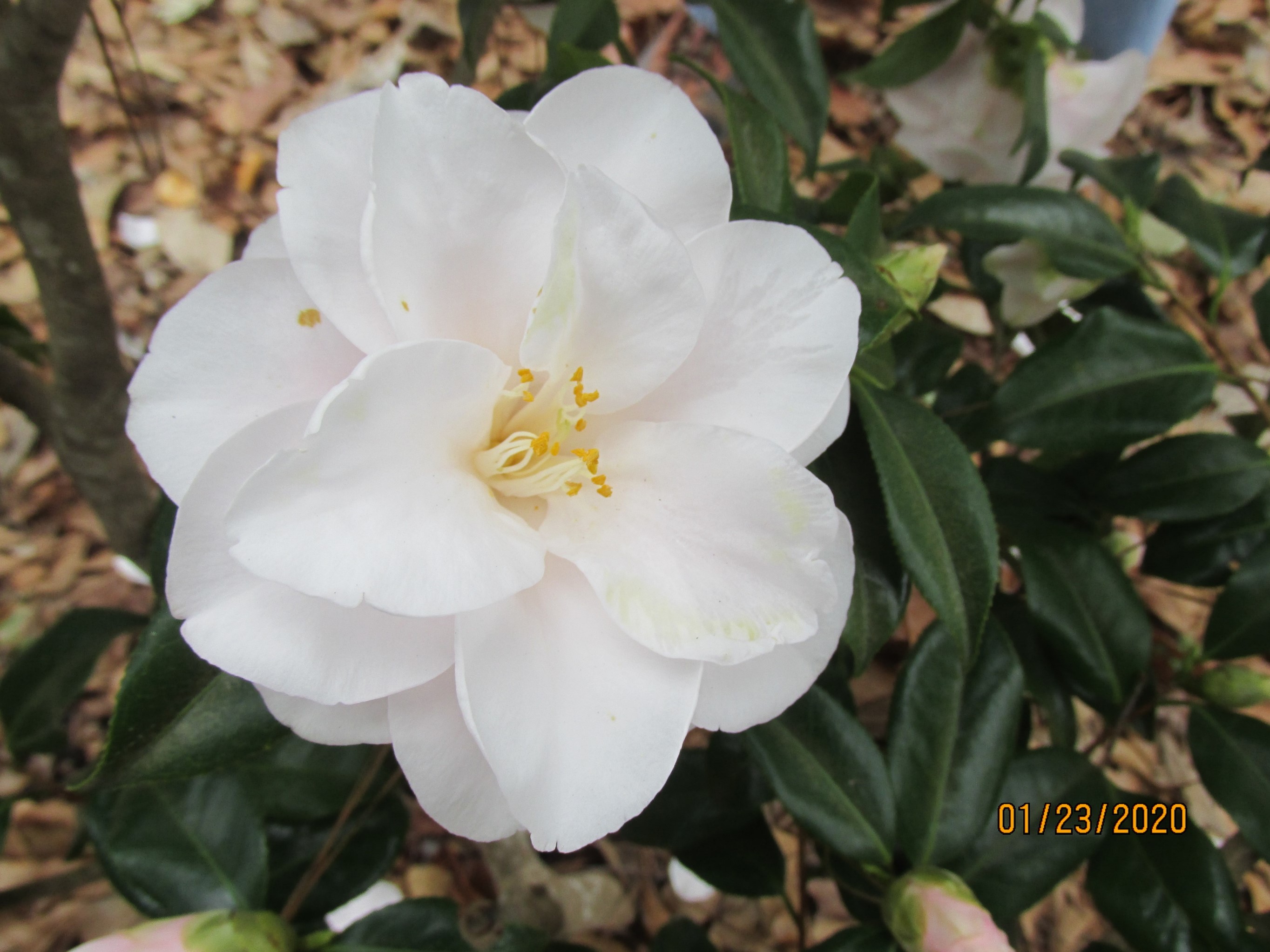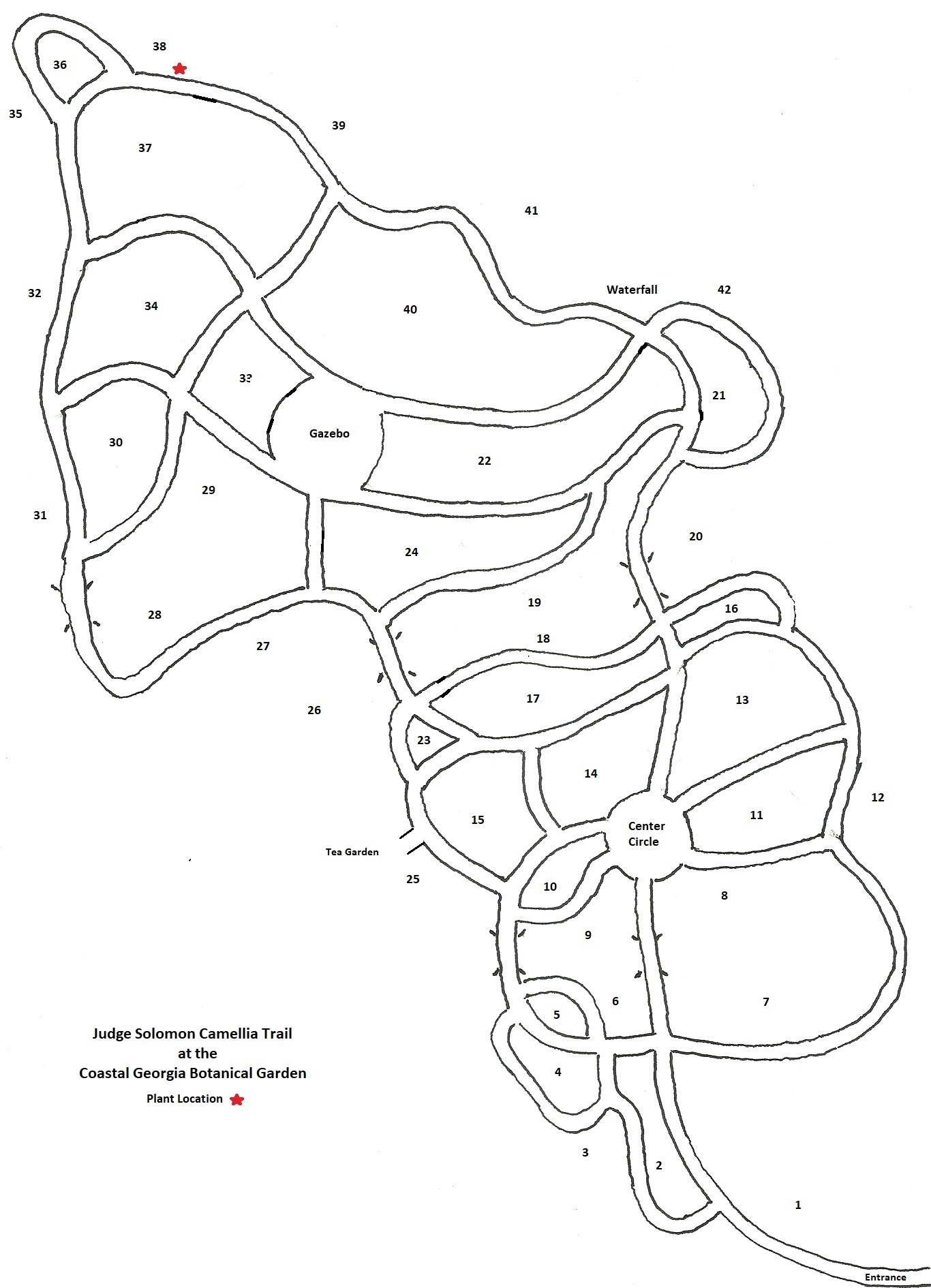The name ‘Hagoromo’ has been used for about 9 cultivars, some now
extinct, including Itō, Ihei, 1695, Kadan Chikinshō: Persimmon pink,
pointed petals, double. Iwasaki, 1821, Honzō: Cherry pink, formal
double. Both different to the modern Hagoromo. Yashiro Kōken, 1841,
Kokon Yōrankō, vol.311. No description; Kasuya, Kamegorō, 1859, Tsubaki
Irohanayose Irotsuki lists three Hagoromo. One a single cherry pink,
sake cup shape; the second one is a persimon pink, double, small;
thought to be the same as Itōs; and finally the third as ‘New Hagoromo’:
Large size, palest pink, double lotus form, which appears to be the same
as the modern cultivar. A classical hose-in-hose semi-double of blush
pink. Medium sized. Petals are curved gradually outwards. Slender stamen
column. Leaves narrowly-elliptic to narrowly ovate-elliptic, undulate,
veins slightly impressed; crenate-serrulate margins. A Japanese camellia
of antiquity, it was imported to Italy in 1886 and renamed
‘Magnoliaeflora’ (‘Magnoliiflora’), by which synonym it is generally
known in the Western World. It was given an “Award of Merit” in 1953 by
the RHS. Its red sport in Portugal was named Magnolia and appeared
later, in California where it was named ‘Rudy’s Magnoliaeflora’.
Synonyms: ‘Magnoliiflora’, ‘Rose of Dawn’, ‘Angel’s Robe’, ‘Feather
Robe’, ‘Hagoromo-Tokyo’. ‘Magnoliaeflora’(Southern).
‘Magnoliaeflora’(Kiyono’s), ‘Southern Magnoliaeflora’,
‘Magnoliaefolia’, ‘Magnoliaeflora Rosea’. Orthographic errors:
‘Hagorome’, ‘Magnoliaeflora’. Pseudonym: ‘Cho-no-hagasane’. Originated
in Kantō, Japan. See Tuyama, 1966, Camellia Cultivars of Japan, pl.95,
p.160; Andoh, 1971, Tsubaki, Meika no Shōkai to Saibai, p.29, pl.82;
Tuyama, 1968, Camellias in Japan, pl.91, p.46 as ‘Hagoromo-Tokyo’;
Seibundō Shinkōsha, 1979, Senchinshū, p.114; Yokoyama & Kirino, 1989,
Nihon no Chinka, p.306; Katei Gahō, ed., 1984, Chabana Koyomi, vol 1,
Tsubaki, p.52. Chinese synonym ‘Yuyi’. This cultivar was awarded as an
AGM (Award of Garden Merit) plant by the Royal Horticultural Society in
1993 at H5 rate (hardy: cold winter; -15°C to -10°C).
|
|
|
|


